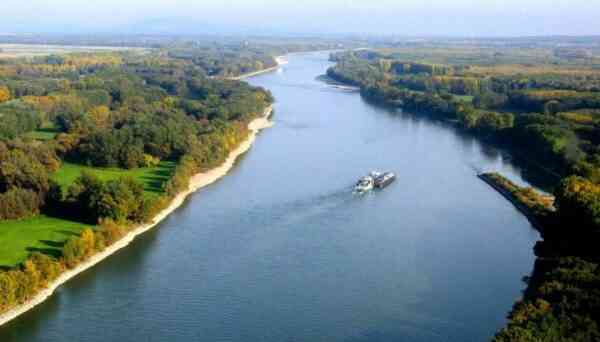The mighty Danube River, which rolls its waters across European expanses, is of great importance for the different peoples inhabiting its banks. The greatness of the Danube is reflected in the cultural heritage of the peoples who inhabited the banks of this river before, in bygone times, but to this day the Danube does not lose its importance. This is an indispensable water artery that irrigates all the surrounding lands, and a place for recreation, and much more. They say that the morning fogs over the waters of the Danube, which can sometimes be observed, are an absolutely unforgettable sight.
Interesting facts about the Danube River
- The Danube flows through the territory or is the border of ten states.
- This mighty river is 2860 kilometers long, making it the largest river in Western Europe (interesting facts about rivers).
- The Danube is the only river classified as neutral water. Trade and passenger ships of any state can sail along the Danube – no one has the right to stop them.
- The Danube is so navigable that even ships can enter it. But really, it’s not far. River boats can sail all the way to Germany.
- Many of the tributaries of the Danube are famous rivers in their own right.
- Primitive people also appreciated this river at its true worth. The oldest human settlements in Europe, discovered by archaeologists, are located just on the banks of the Danube.
- In total, this mighty river has about 120 tributaries, half of which are navigable for river vessels.
- Most of all, the Danube went to Hungary – about 30% of this river flows through the territory of this country.
- The Danube is the leading European tourist route. River cruises are very popular here, hundreds of thousands of tourists go there.
- 6,700 cubic meters of water flows through the mouth of the Danube every second.
- The Danube is the second largest river in Europe after the Volga (interesting facts about the Volga River).
- There are dozens of large cities on the Danube, including the capitals of European countries: Vienna (Austria), Belgrade (Serbia), Budapest (Hungary), Bratislava (Slovakia).
- The largest island on the Danube is Zhitny, located in Slovakia.
- The Danube freezes only in cold winters, and then only for 1.5-2 months.
- There are as many as 19 locks on the Danube, and the difference between the upper and lower pools can be from 5 to 34 meters.
- In Slovenia, the capital of Austria is not called Vienna, but Dunaj. Well, the name of the river in Slovenian sounds a little different – Danova.
